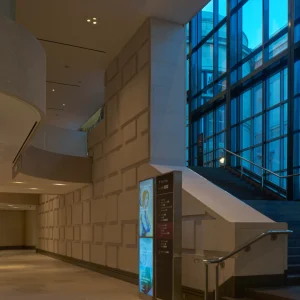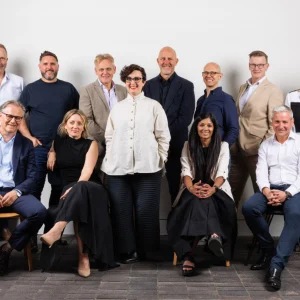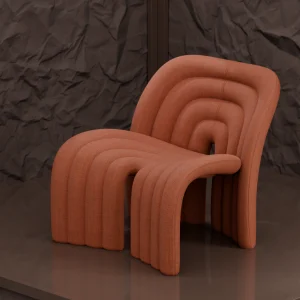‘Le Grand Pari de l’agglomeration parisienne’ – Grand Paris, opened to the public on April 29, 2009 in the Palais de Chaillot at Trocadero. A result of two-years in-depth consultations, the ongoing exhibition comprises the works of 10 architects whose models provide a vision for future cityscape of Paris. The emphasis is on green technology, enlargement of existing living spaces and better transport links, while preserving the city’s old architecture. The exhibition will be on till November 22.
Nicolas Sarkozy first expressed his desire to develop Paris from a metropolitan capital city to a “global force of new development” on the inauguration of the Cité de l’Architecture et du Patrimoine, on September 17, 2007.
An official architectural consultation was launched in June 2008, under the authority of a Steering Committee composed of the State, the City of Paris, the Ile-de-France and the Association of Mayors of Ile-de-France, assisted by a Scientific Committee of 23 qualified individuals with the architect Chemetov Paul and geographer Michel Lussault. The overall coordination of the consultation was entrusted by the President of the Republic Ministry of Culture and Communication.
Since June 2008, each of the 10 teams selected, worked to achieve the two major sections of the consultation: ‘the 21st century post-Kyoto metropolis’ and ‘the prospective diagnosis of the Paris agglomeration’.
All the participating teams finally gathered in the great hall of Théâtre National de Chaillot at La Cité de l’architecture et du patrimoine in March 2009, for a day-long public debate. The teams were invited to compare their proposals in areas like environment, economics, social balances and mobility. Researchers from other major “metropolitan projects” (Greater London, Greater Madrid, Greater Berlin, etc.) were invited to share their experiences.
Grand Paris exhibition is an international mobilization of the professional skills of a dozen agencies in architecture and urbanism.
Describing these projects as “diametrically opposite of utopianism, profoundly rooted in the reality of the metropolitan soil”, President Nicolas Sarkozy made it clear that this was not an architectural competition, where the winning entry will be implemented in full. The aim of the government is to derive inspiration from the submitted draft projects.
The common elements in most of the visions of the future are the extension of railway lines for local transport, the enlargement of the metro and road network, as well as compliance with the environmental commitments involved in the Kyoto protocol.
The 10 multi-disciplinary teams, include Sir Richard Rogers, Rogers Stirk Harbor team & Partners / London School of Economics / Arup; Yves Lion, Descartes Team Group; Djamel Klouche team AUC; Christian de Portzamparc, team Atelier Christian de Portzamparc; Antoine Grumbach, Grumbach Agency team and associates; Jean Nouvel, a representative of the team Ateliers Jean Nouvel / Michel Cantal-Dupart / Jean-Marie Duthilleul; Bernardo Secchi and Paola Vigano, Studio 09 team; Finn Geipel, team LIN; – Roland Castro, Castro Team Workshops / Denissof / Casi; and Winy Maas, MVRDV team.
President Sarkozy has suggested a relaxation of the city’s building regulations, to improve the shortage of housing in the city of 12 million inhabitants. Such a relaxation would enable the government to build 70,000 new council flats and a number of skyscrapers in the center of the city, where the construction of high-rise buildings has been forbidden since last 30 years. There are concrete plans for six construction sites in six of the outer districts, the 12th, 13th, 15th, 17th, 18th and 20th arrondissements.
In transport, the President has green lighted the ‘Big Eight’ – a 24-hour, driverless, regional metro system in the shape of a giant figure eight, that will connect Paris to its troubled suburbs (130km) by the year 2020. Proposed by the Secretary of State Christian Blanc, the project will require funds to the tune of EUR21 billion ($29.3 approx.). There would also be projects for the extension of new tram lines, new trams, common transport lanes, etc.
The President also plans to include the creation of a forest landscape near Charles de Gaulle airport and the development of a huge technology park in Saclay, Île de France, with 3,000 inhabitants.
These projects will be financed with a combination of public and private funds to the tune of EUR35 billion ($48.8 billion approx.) released initially, following further fundings. In terms of timing, a bill will be tabled in October to start work in 2012. Furthermore, the President also wanted an ‘International Workshop of Greater Paris’ to be created, so that architects can accompany the project in the next 10 years.
There is also a proposal to establish a World Urban Forum by 2010, where the ten teams can share their thoughts, experiences and achievements in the run up to Grand Paris. The building work would begin in 2012, at the end of Sarkozy’s present term in office, and the projects would take about 10 years to complete.





